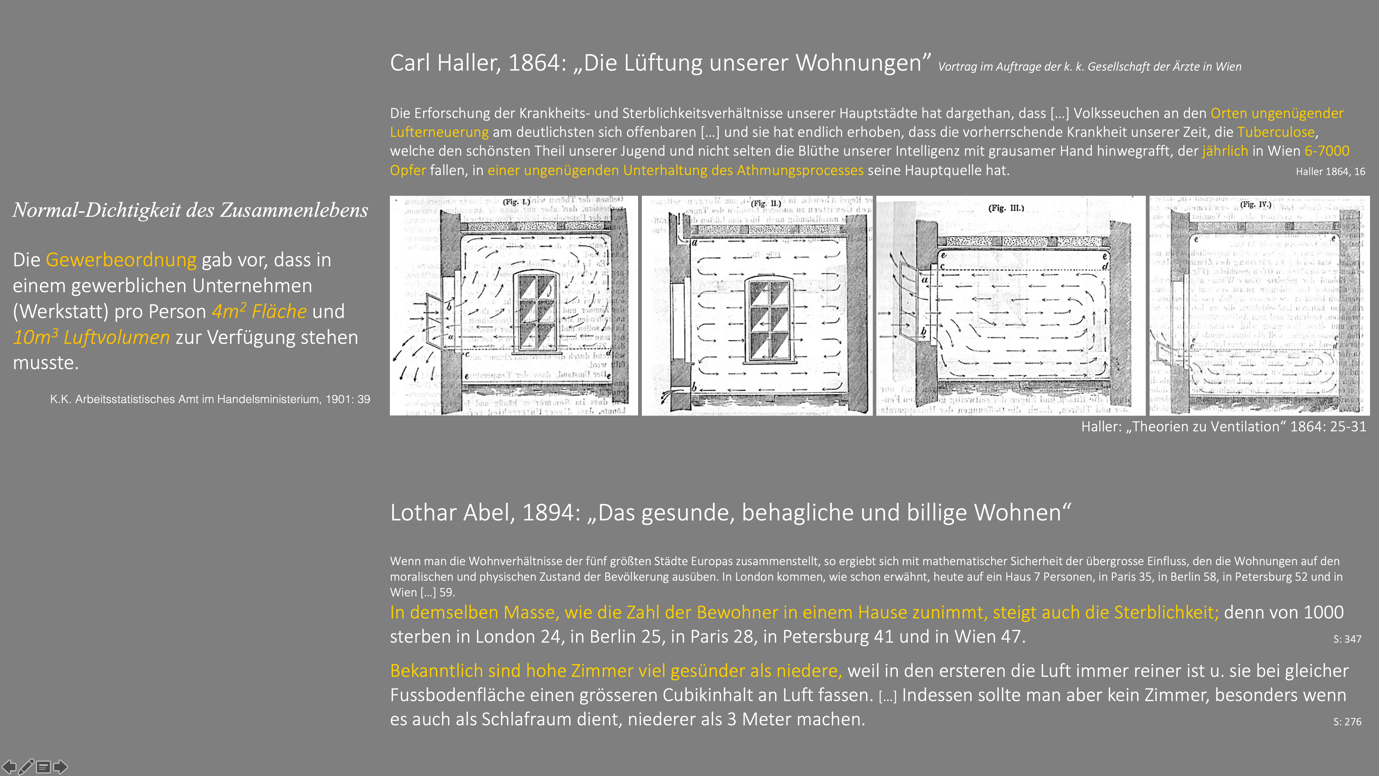Mixed Building Use Promotes Mixed Urbanity: Insights from Historical Use-neutral Architecture
Angelika Psenner

Image: Theories of Ventilation according to Carl Haller 1864 and Lothar Abel 1894. © Psenner
Abstract
Starting from the idea that we no longer want to go on with the separation of housing, working and leisure within the city and its quarters—as it had been codified by the Charta of Athens and in succession by many legal advices, like the development, land use and master plans of the different cities; but which in the end leaded to dormitory suburbs, nightly depopulated business district and almost deserted urban open spaces, that redundantly have to be dumped to the overwhelming traffic (the other outcome of urban functional separation)—we deeply consent that remixing is the adequate answer. The newly planned and developed city quarters all over Europe—like HafenCity Hamburg, Seestadt Aspern—represent this new approach.
This remixing has to be enabled not only within the quarter or within the upper and lower levels of a house—by putting a certain number of shops underneath a traditional residential building on top—but it actually has to be enabled throughout the whole building and throughout every single building. And the mix has to be richly varied and flexible at any time of the buildings’ lifespan. Units shall be used as apartments and after some years—if the tenants or owners change, or if the residents’ perspectives have changed—the units shall be easily converted into offices or studios or even gymnastic halls and restaurants.
The architectural concept that offers the solution to this task does not have to be complex nor does it have to be expensive. Actually Vienna already disposes such an architectural structure that evidently does fulfil the mission: The Gründerzeit architecture easily performs the task of being use-neutral.
Psenner, A. “Mixed Building Use Promotes Mixed Urbanity: Insights from Historical Use-neutral Architecture.” In REAL CORP 2012, RE-MIXING THE CITY – Toward Sustainability and Resilience?, edited by M. Schenk, V.V. Popovich, P. Zeile and P. Elisei, 463-473. Vienna, 2012. http://www.corp.at/archive/CORP2012_18.pdf



